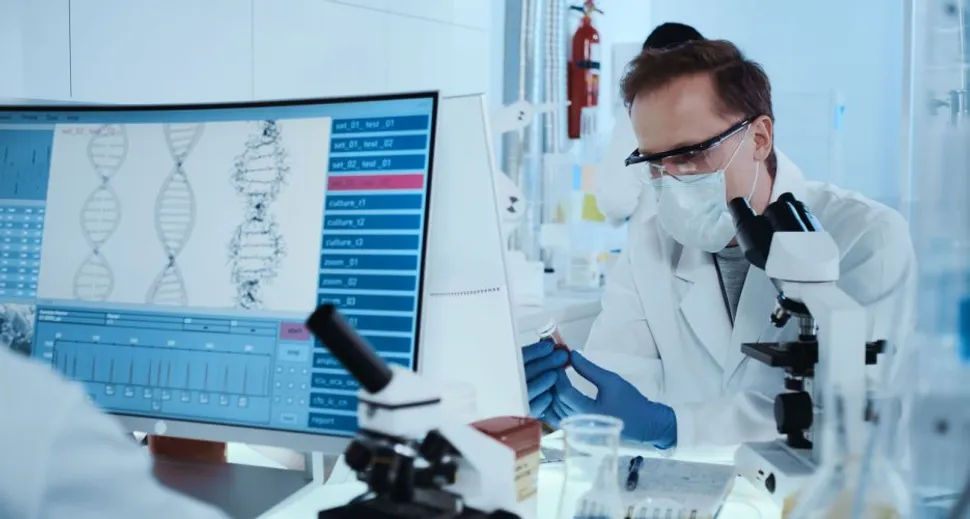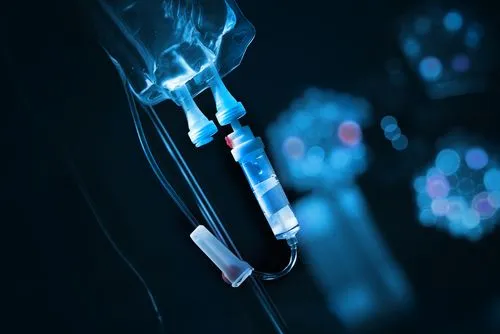A CMML Special Initiative Supports the Development of Innovative Treatment Options

Chronic myelomonocytic leukemia (CMML) begins when stem cells inside the bone marrow become abnormal. These abnormal cells produce immature white blood cells called blasts that continue to grow out of control and overcrowd normal blood cells like red blood cells, white blood cells, and platelets. CMML cells prevent healthy cells from developing into mature blood cells.
The CMML Special Initiative
CMML research aims to find effective, targeted therapies. “Targeted molecular therapy is a type of personalized medical therapy designed to treat cancer by interrupting unique molecular abnormalities that drive cancer growth.“ The Leukemia and Lymphoma Society plans to invest $13 million over five years in a special initiative that centers on targeted research to better understand CMML and provide essential, innovative treatment options.
One of the initiatives supported by the LLS's Special Initiative includes research from the University of Manchester in the United Kingdom led by Sam Butterworth, PhD, utilizing CCL2-drug conjugates to target and eliminate cancer cells. This project will run from November 1, 2023, to October 31, 2026.
“CMML is a type of blood cancer with few effective treatments, and most patients have a poor prognosis. To address this problem, we have come up with a new approach using drugs that specifically attach to and eliminate the key cells responsible for the disease, more efficiently and accurately.”
How CCL2 Works
CCL2 is a manufactured protein that is naturally absorbed by the body into its blood cells. It attaches to another protein, called CCR2, that is found on the outside of CMML cells. Healthy cells are not affected. Potent drugs can be delivered directly to cancerous cells through this avenue.
A New Approach
Currently, the lead drug being tested is CCL2-MM145, which has been shown to effectively kill cancer cells. “In our proposed project, we aim to speed up the development of CCL2-MM145 and bring it to CMML patients in clinical trials.” The goals of this initiative are to:
- Better understand the unique characteristics of CMML cells and how they work
- Uncover what makes these cells sensitive or resistant to CCL2-MM145
- Learn about the beneficial and harmful effects of this new treatment
- Determine how CCL2-MM145 may work in combination with other medications
Conclusion
This special initiative will offer essential treatment information and options for patients. Dr. Butterworth and his team possess extensive experience in developing new drugs, understanding CMML biology, and conducting clinical trials. You can explore other research funded by the initiative here. We hope this important initiative will expand treatment options for those with CMML.
Chronic myelomonocytic leukemia (CMML) begins when stem cells inside the bone marrow become abnormal. These abnormal cells produce immature white blood cells called blasts that continue to grow out of control and overcrowd normal blood cells like red blood cells, white blood cells, and platelets. CMML cells prevent healthy cells from developing into mature blood cells.
The CMML Special Initiative
CMML research aims to find effective, targeted therapies. “Targeted molecular therapy is a type of personalized medical therapy designed to treat cancer by interrupting unique molecular abnormalities that drive cancer growth.“ The Leukemia and Lymphoma Society plans to invest $13 million over five years in a special initiative that centers on targeted research to better understand CMML and provide essential, innovative treatment options.
One of the initiatives supported by the LLS's Special Initiative includes research from the University of Manchester in the United Kingdom led by Sam Butterworth, PhD, utilizing CCL2-drug conjugates to target and eliminate cancer cells. This project will run from November 1, 2023, to October 31, 2026.
“CMML is a type of blood cancer with few effective treatments, and most patients have a poor prognosis. To address this problem, we have come up with a new approach using drugs that specifically attach to and eliminate the key cells responsible for the disease, more efficiently and accurately.”
How CCL2 Works
CCL2 is a manufactured protein that is naturally absorbed by the body into its blood cells. It attaches to another protein, called CCR2, that is found on the outside of CMML cells. Healthy cells are not affected. Potent drugs can be delivered directly to cancerous cells through this avenue.
A New Approach
Currently, the lead drug being tested is CCL2-MM145, which has been shown to effectively kill cancer cells. “In our proposed project, we aim to speed up the development of CCL2-MM145 and bring it to CMML patients in clinical trials.” The goals of this initiative are to:
- Better understand the unique characteristics of CMML cells and how they work
- Uncover what makes these cells sensitive or resistant to CCL2-MM145
- Learn about the beneficial and harmful effects of this new treatment
- Determine how CCL2-MM145 may work in combination with other medications
Conclusion
This special initiative will offer essential treatment information and options for patients. Dr. Butterworth and his team possess extensive experience in developing new drugs, understanding CMML biology, and conducting clinical trials. You can explore other research funded by the initiative here. We hope this important initiative will expand treatment options for those with CMML.

about the author
Lisa Foster
Lisa Foster is a mom of 3 daughters and 1 perfect grandchild, a puzzle lover, writer and HealthTree advocate. She believes in the mission of the foundation and the team that builds it forward. She calls Houston, Texas home.
More on Treatment Advances
Trending Articles
Get the Latest Chronic Myelomonocytic Leukemia Updates, Delivered to You.
By subscribing to the HealthTree newsletter, you'll receive the latest research, treatment updates, and expert insights to help you navigate your health.
Together we care.
Together we cure.
3x Faster.









